|
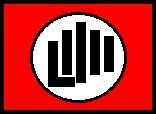

Okinawa Shorin-ryu Clan
Philippines Karate Club (1975)
S.E.C. No. INO 094-000136
I'd
love to hear from you! Send your photos, greetings (for posting),comments and suggestions to me at:
chito_divina@yahoo.com or to sapym_osc@yahoo.com
Please Contact Ld. Adrian Carranza (www.sapym_osc@yahoo.com)
for your updates of your chapter.
"One Aim, One Organization"
OSC KARATE CREED
I come to you, with only karate, my Empty Hands. I have no weapons, but should i be forced, to defend myself, my principles, or my honor. Should it be a matter of life or death, of right or wrong. Then here are my weapons, karate, my Empty Hands.
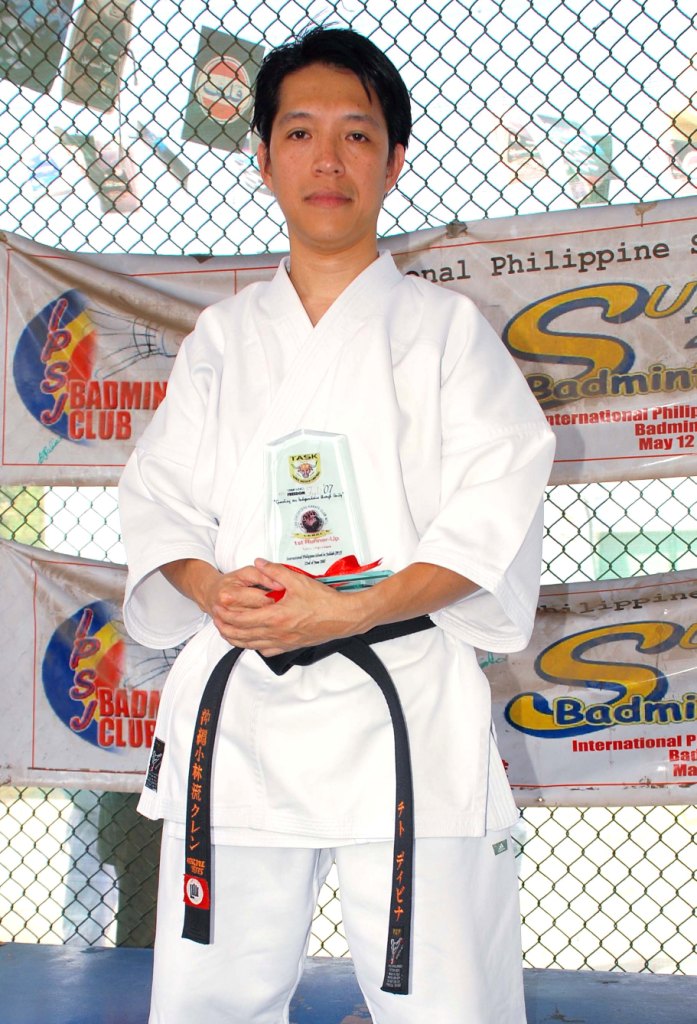
Ld Chito Divina, winning 1st runner-up (Senior Individual Blackbelt Kata) in the recent LEKC-Taurus Karate Invitational Tournament held at the International Philippine School Jeddah (IPSJ)
last June 22, 2007.
Link:
SAPYM-OSC
Sorsogon
(Visit us)
Youtube.com SAPYM-OSC
(See our video clips)
|

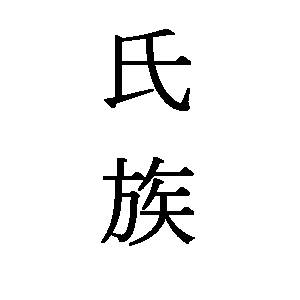

(OKINAWA SHORIN-RYU SHIZOKU)
Philippines Karate Club
Welcome
to our home page. Here we will feature
latest news in and about our organizations' activities, locally and internationally.
We will also feature in a column about extras: Seminars, Upcoming Tournaments, etc.
You can also send any news item, photos, greetings for web publishing to : horizonryukai@hotmail.com/ sapym_osc@yahoo.com.
We encourage your contributions, whatever it may be, comments or suggestions regarding your chapters
training courses and schedules.

- The Horizon -
INDEX
SAPYM-OSC LEADERSHIP TRAINING COURSE
SM Elopre at SAPYM-OSC 14th YEAR ANNIVERSARY
OSC Region IV: SUMMER 2008: OVERNIGHT TEAM BUILDING ACTIVITY AND PROMOTION RITES
"GRAND OLD MAN" OF PHILIPPINE AMATEUR KARATE ASSOCIATION
EXTRA FEATURES!!!
History of Okinawan Kobayashi Shorin-ryu
Bassai (Passai) Kata
NEW - Concept of Kata Bunkai
PROMOTION OF LD. CHITO
December 26, 2008 at 2pm
Market-Market Mall, Taguig City.
Ld. Chito Divina promoted to 6th dan Red and White Belt by Supreme Master Benny Elopre
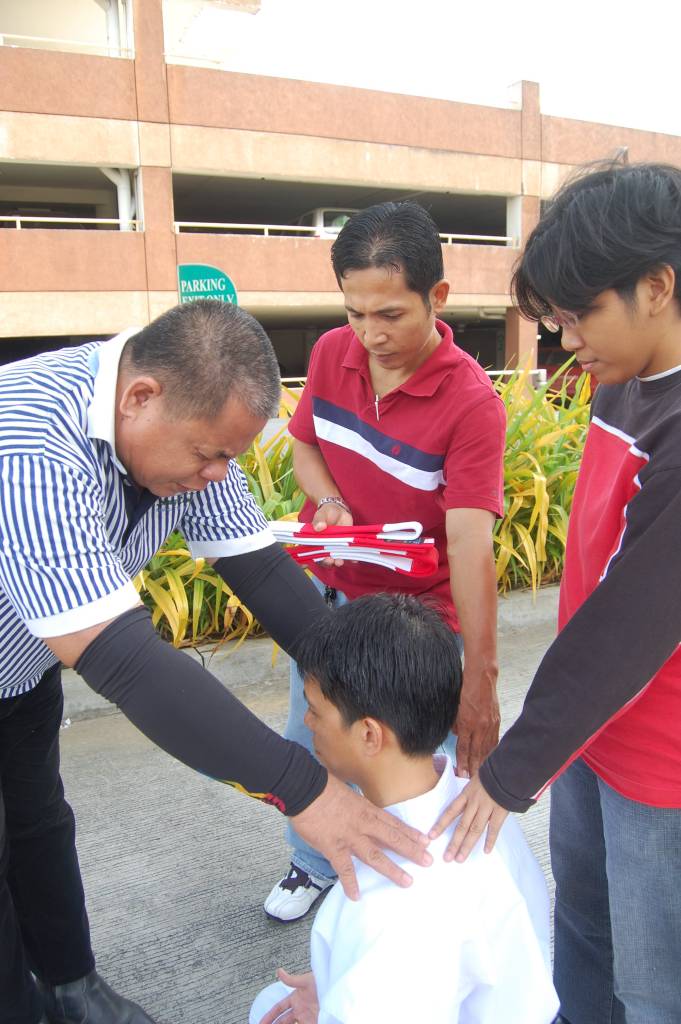 
Ld. Chito "The Horizon" on his 6th dan Red and White Belt promotion
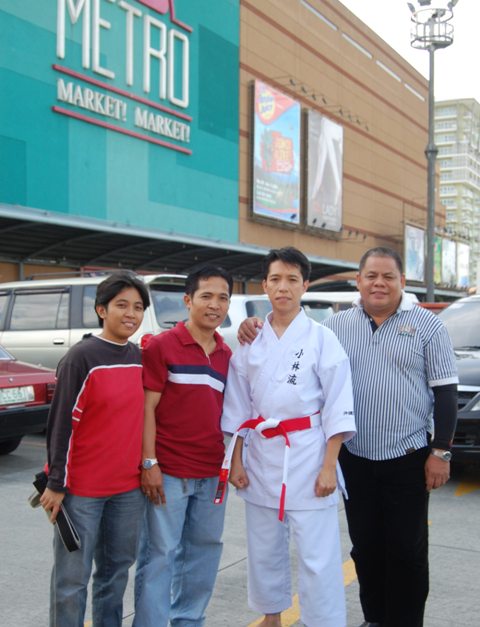
Ld. Arianne, Ld. Ton, Ld Chito and SM Benny Elopre pose after the promotions rite
LAGUNA WARRIORS
OSC Laguna Chapter
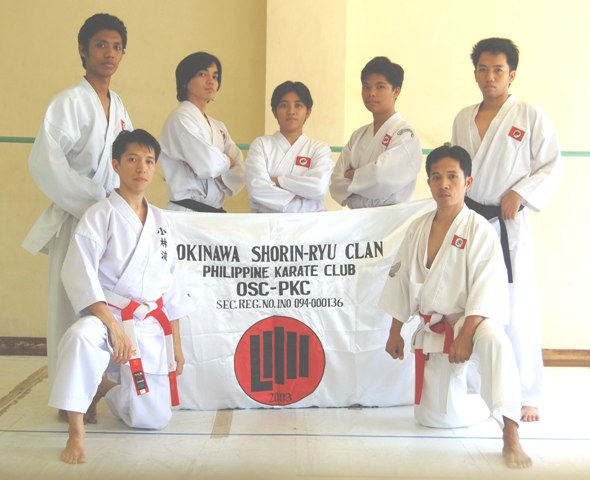
OSC Region IV: SUMMER 2008: OVERNIGHT TEAM BUILDING ACTIVITY AND PROMOTION RITES
SUMMER 2008: OVERNIGHT TEAM BUILDING ACTIVITY AND PROMOTION RITES
May 17-18, 2008 Central Gym (RGRV) Chapter and Mater Ecclesiae School Chapter Region IV
Headed by: Ld. Master Antonio P. Docot


Wake-up call, warm-up exercises, jogging and OSC Lecture


Calisthenics, Review of basics: Preparation for Promotion Rites
____________________________________________________________________________
"THE THUMB/THE LAST WARRIOR" @ SAPYM-OSC PROVINCIAL COMMAND
SAPYM-OSC 14TH YEAR ANNIVERSARY
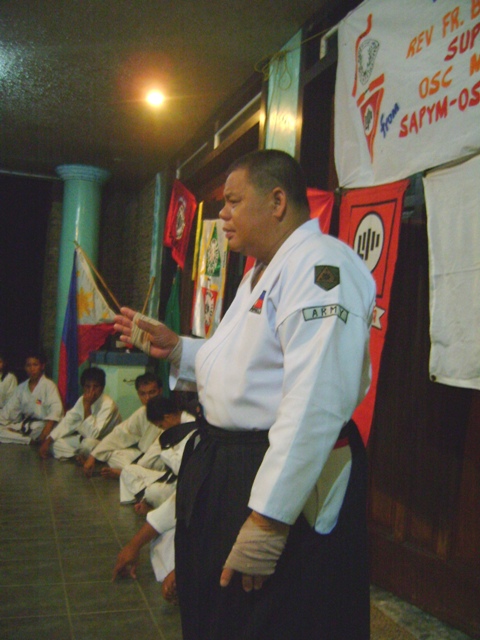
SupremeMaster Benny Elopre at SAPYM-OSC 14th year Anniversary at Donsol Sorsogon
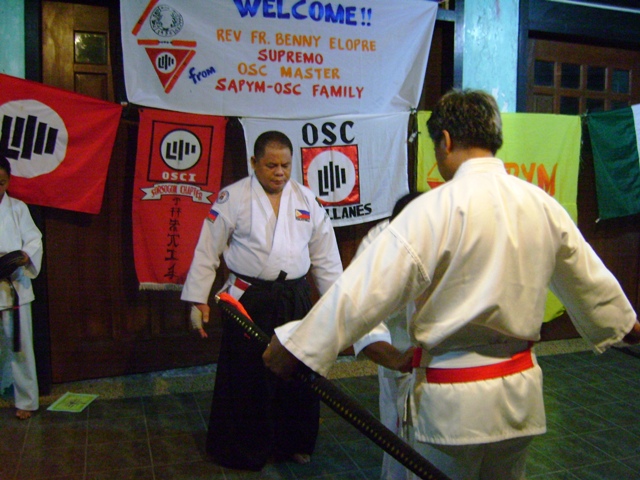
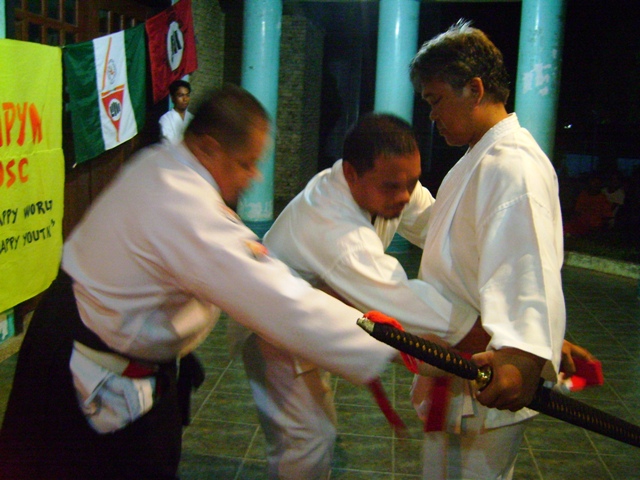
Master(rev.fr.)George "The Crusader" Fajardo receives his 6th Dan Red and White Belt
from SM Benny Elopre. While Master Jose "The Conqueror" E. Credo assisted the Belting Ceremony
and the SAPYM-OSC BlackBelts sponsored and witnessed the ceremonial rites during the SAPYM-OSC 14th Year Anniversary.
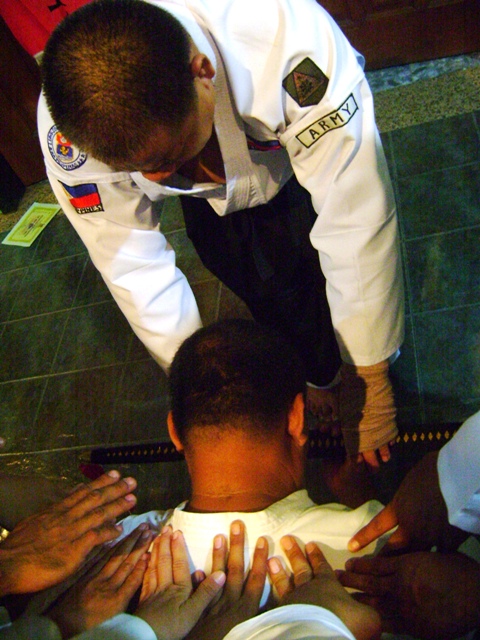
Master Jose "The Conqueror" E. Credo receives his Sr.6th Dan Red and White Belt
from SM Benny Elopre during the SAPYM-OSC 14th Year Anniversary. Ceremonial rites was sponsored and witnessed by
SAPYM-OSC Black Belts and Members.
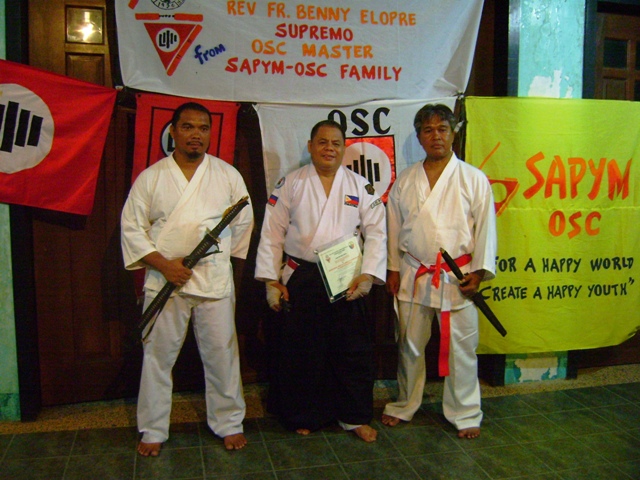
SM Benny "The Thumb/The Last Warrior" Elopre with newly promoted
Master Jose "The Conqueror" Credo and Master (rev.fr.)George "The Crusader" Fajardo.
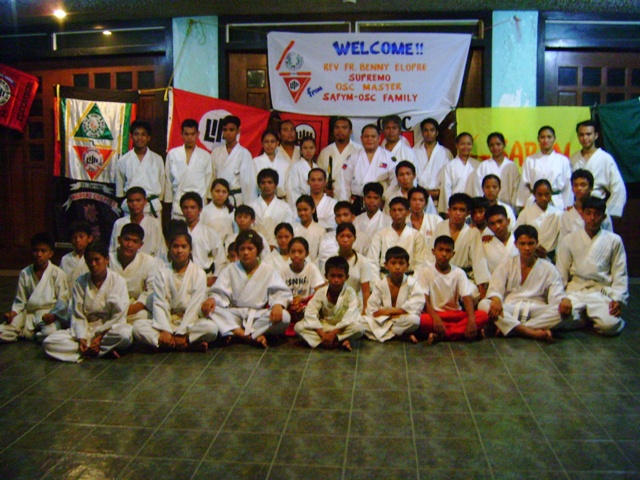
HALE! SM Benny "The Thumb/The Last Warrior" Elopre with
SAPYM-OSC members.
__________________________________________________________________________________________________________________________
SAPYM-OSC LEADERSHIP TRAINING COURSE
Leadership Training Course, OSC-SAPYM Sorsogon
headed by Ld Adrian Carranza
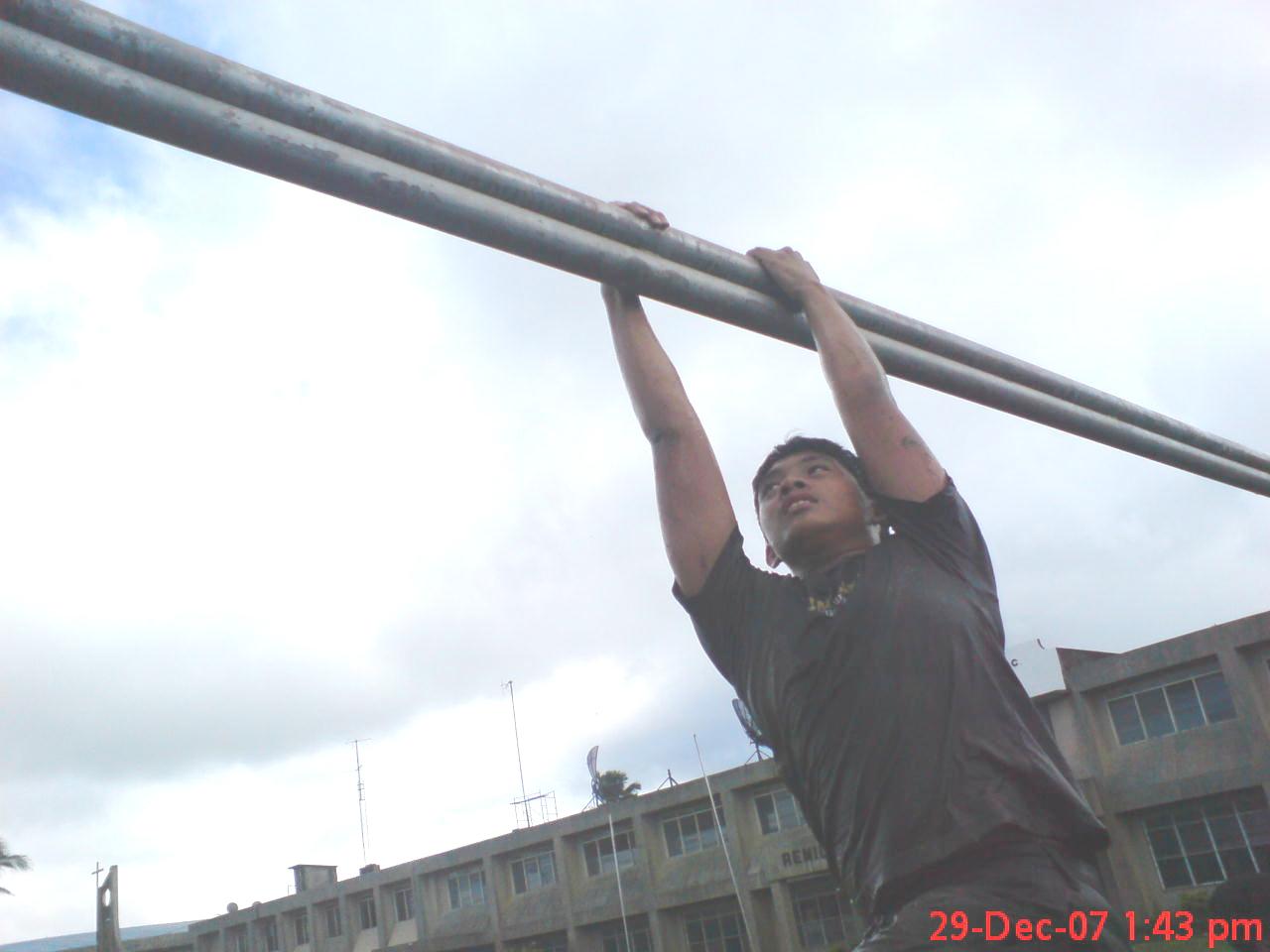
LTC Run for LTC course
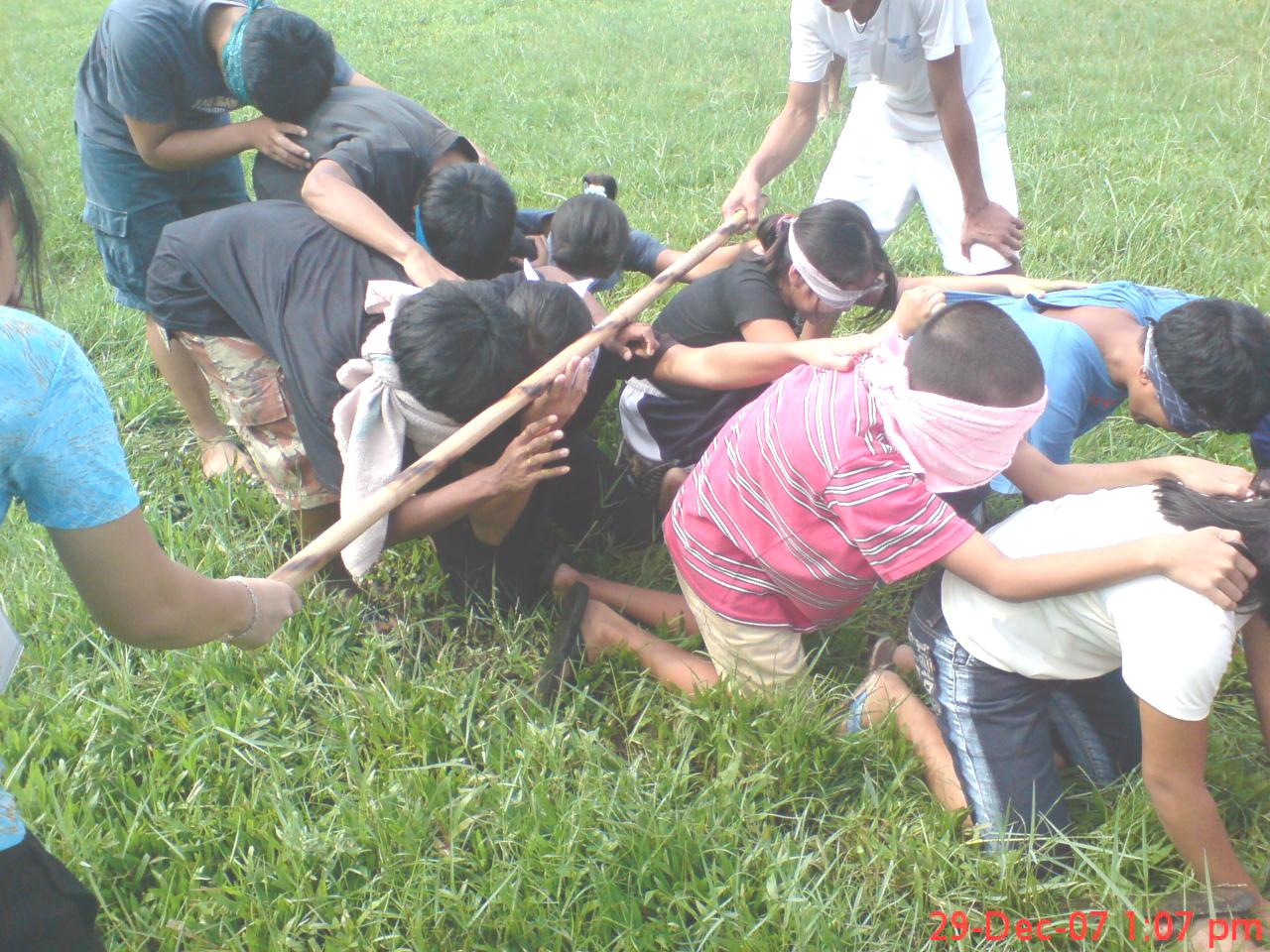
LTC Run for LTC course
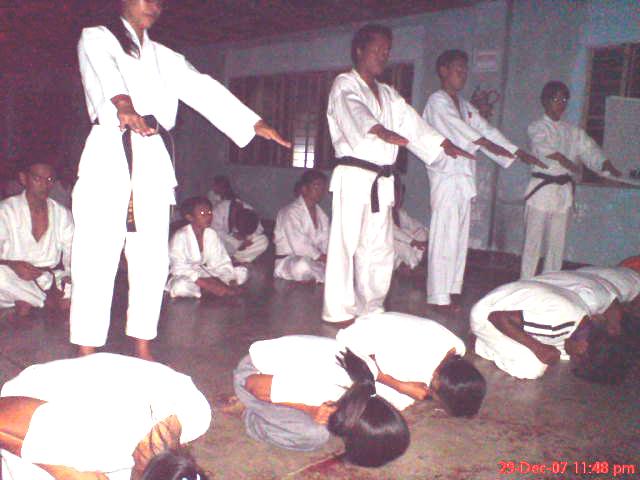
Leadership Training Course (LTC)Acceptance Rite
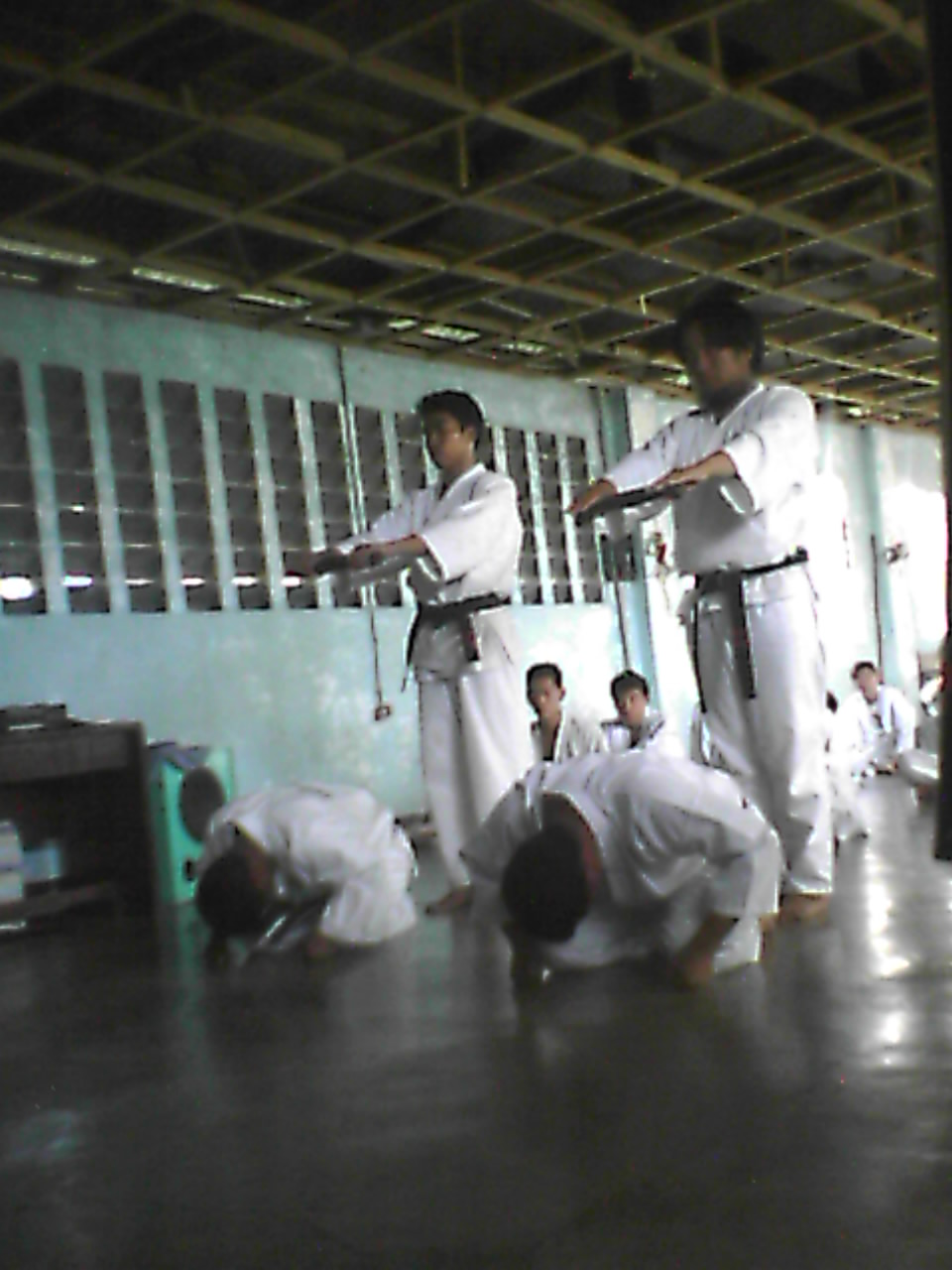
LTC Promotion rites. Headed by Ld. Ray Adrian F. Carranza- LTC Course Director and Ld. Resty Esquivel- Newly Elected Commando President
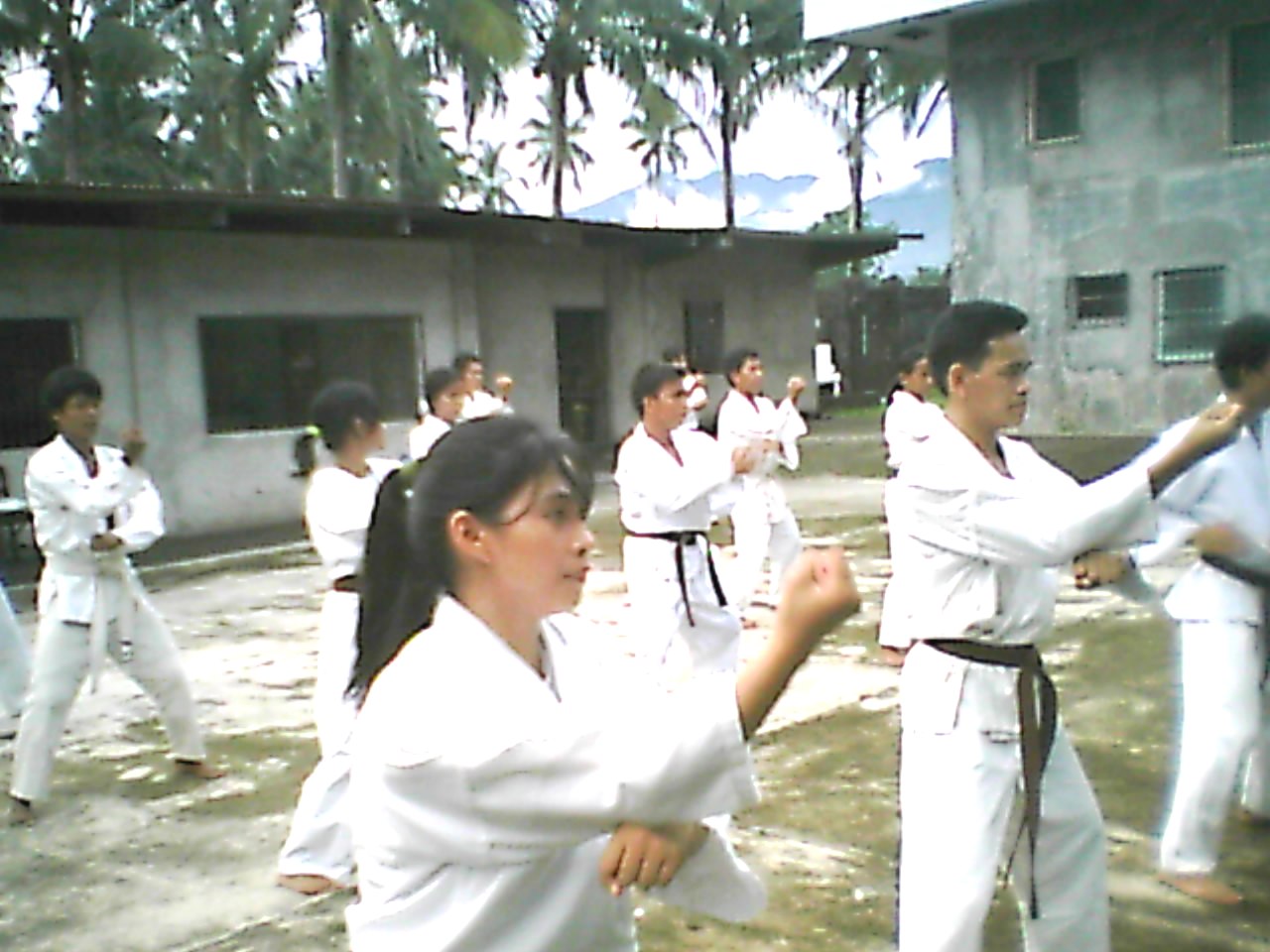
Basic Kata Standardization training
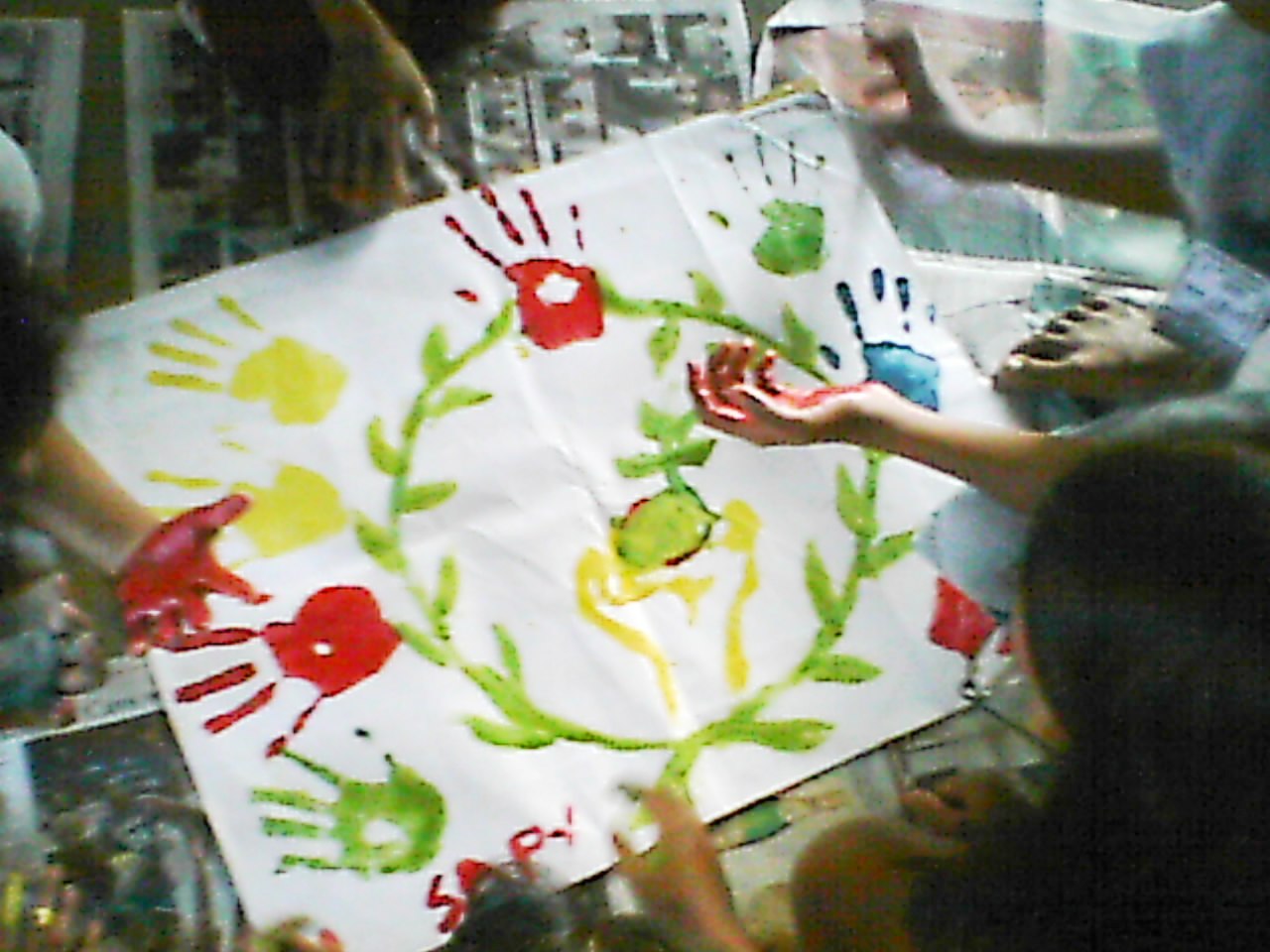
Painting activity "Leader"
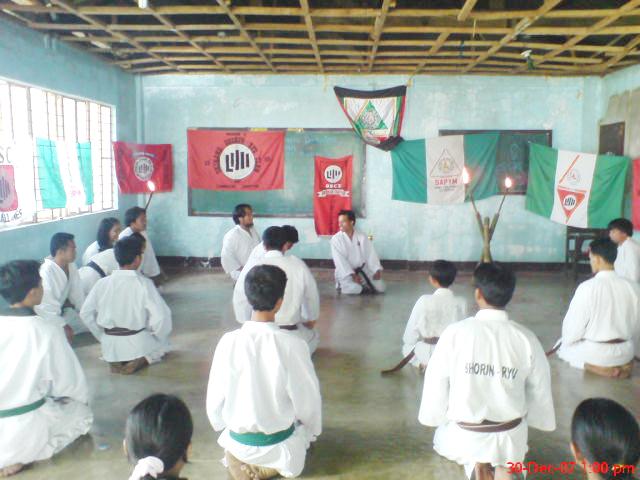
Promotions rite.. sponsored by Ld. Marco Pancho

SAPYM-OSC Kapatiran ng Lakan..1st row sitting (L-R)Ld. Marco Pancho, Ld. Resty Esquivel
2nd row standing )L-R) Ld. Mae Rey, Ld. Beda Fajardo, Ld. Ray Adrian Carranza, Ld. Sheena Echano
last row standing (L-R) Ld. Shean de Borja and Ld. Efren Lagadia
SORSOGON SAPYM-OSC HOLDS LEADERSHIP TRAINING
The Sap of the Young Macer-Okinawa Shorin-ryu Clan (SAPYM-OSC) conducted Leadership Training Courses I and II for its qualified members held at Aemillianum College Inc., Sorsogon City on December 27-30, 2007 through the auspices of the SAPYM-OSC Provincial Command and the Kapatiran ng Lakan/ Black Belt Circle.
The Leadership Training Courses were designed to create strong leaders out of the members and to strengthen the leadership body of the club. This two-fold purpose of training is very necessary and relevant especially at this stage of development as a Club.
For growth and development of the Club there will necessarily be changes in the Leadership Body in order to give others the opportunity to develop themselves as good leaders and to give them time to serve the Club. Although, our Club is hierarchical in nature since we recognize lineage of the Masters, we too have to respect the natural growth of each member by giving them opportunities for growth and development. Hence, it is necessary to train them to become good leaders. And good leaders assure us for the survival of the Club and of the society.
In this event, we help our members discover and be conscious of their powers and its limitations, become real persons and individual, be aware of the sacred value of life, develop in them the value of discipline and camaraderie and Christian values of community, love, service and peace among the members and society. Through personal development, spiritual growth and environmental awareness we mold members to be a good individual, citizen and a disciplined leader.
Ld. Master Rev. Fr. George A. Fajardo, founder of SAPYM, SAPYM-OSC spiritual director and Ld. Master Jose E. Credo, OSC provincial director are the very first to be awarded with distinct pride the “Sap of the Young Macer- Okinawa Shorin-ryu Clan Award during the SAPYM-OSC Christmas Party on December 27, 2007.
The new elected Provincial Command Officers for 2008-2009 are President Ld. Restituto Esquivel, Vice President Ld. Sherry Ann de Borja, Secretary Migs Mark Alvin Lusuegro, Treasurer Migs Venus Rocha, Auditor Migs Krisma Rey, P.R.O. Migs Me-Ann del Ayre, Senior Provincial Training Officers Migs Carlo Casabar for Donsol Chapter, Migs Erwin Berjuega for Cumadcad Chapter, Migs Joel Fontaniel for Gubat Chapter, Migs Jonas Mella for Magallanes Chapter and Migs Jeremy Dolosa and Migs Michael Palatino for Sorsogon based chapters- Aemillianum College Inc., Pangpang Aemillianum Elementary, Sorsogon and Sorsogon State College.
The event was participated in by 54 SAPYM-OSC members coming from the five (5) chapters ( Donsol, Cumadcad, Gubat, Magallanes and the Sorsogon City based chapters- (Aemillianum College Inc., Pangpang Aemillianum Elementary School, Sorsogon and the newly recognized chapter Sorsogon State College) from the different towns of the Province of Sorsogon and Sorsogon City and. Ld. Ray Adrian F. Carranza (Course Director) SAPYM Director, Ld. Master Jose E. Credo OSC Provincial Director, Ld. Carlo E. Hapa (Asst. Course Director) Chairman Kapatiran ng Lakan/ Black Belts Circle and the Provincial Command of SAPYM-OSC sponsored the LEADERSHIP TRAINING COURSES I AND II.# (SAPYM-OSC Provincial Command)
(
Top)
PHILIPPINE AMATEUR KARATE ASSOCIATION
(Okinawa Shorin-ryu Karate Association)
(United Karate-do Association)
(Commando Self Defense Club)
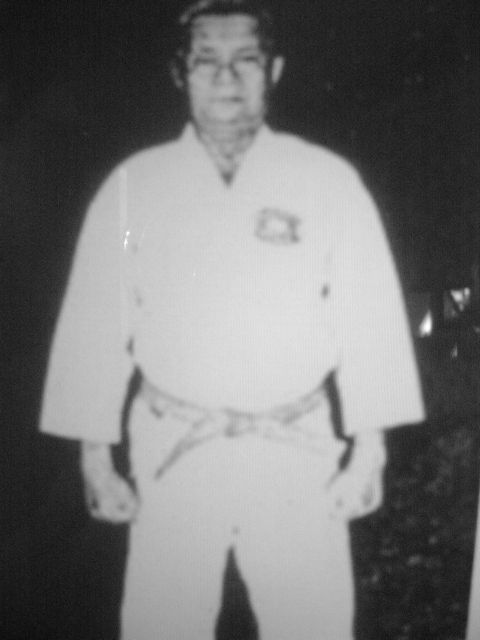 Latino Gonzalez is known as the "Grand Old Man" of karate in the Philippines. In the mid
1950's he established the first commercial self defense club in the Philippines, which he
called the Commando Self-Defense Club. He taught Arnis de Mano his version of Filipino Ditso
(Ju-jitsu) and Kodokan Judo. Assisting him were his sons Rolando and Roberto, both experts in
the fighting arts. Latino Start teaching the Kyukoshinkai style of Japanese karate but later
switched to Shorin-ryu style of Okinawa Karate. In 1958 he formed the Philippine Amateur Karate
Association.
>p>
To upgrade his style of okinawan karate, Gonzalez availed of the services of Seikichi Iha, a
senior instructor in the Miyahira Shorin-ryu Karate Association. After Iha, the PAKA also took
advantage of another Shorin-ryu Instructor in the person of Seigi Shiroma. Latino Gonzalez is known as the "Grand Old Man" of karate in the Philippines. In the mid
1950's he established the first commercial self defense club in the Philippines, which he
called the Commando Self-Defense Club. He taught Arnis de Mano his version of Filipino Ditso
(Ju-jitsu) and Kodokan Judo. Assisting him were his sons Rolando and Roberto, both experts in
the fighting arts. Latino Start teaching the Kyukoshinkai style of Japanese karate but later
switched to Shorin-ryu style of Okinawa Karate. In 1958 he formed the Philippine Amateur Karate
Association.
>p>
To upgrade his style of okinawan karate, Gonzalez availed of the services of Seikichi Iha, a
senior instructor in the Miyahira Shorin-ryu Karate Association. After Iha, the PAKA also took
advantage of another Shorin-ryu Instructor in the person of Seigi Shiroma.
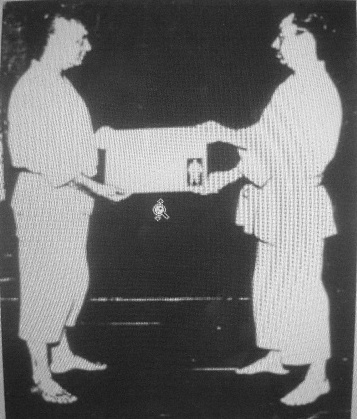 Grandmaster Katsuya Miyahira of Okinawa Shorin-ryu Karate Kyokai visited Latino Gonzales
frequently to check the progress of Shorin-ryu Karate in the Philippines. When Miyahira
promoted to the 10th Degree Red Belt, he assumed the leadership of the Shorin-ryu Karate System
in Okinawa. Latino Gonzales was promoted to 9th Degree (Latino receives his promotion form
Grandmaster Katsuya Miyahira) while Roberto and Rolando were promoted
to 7th Degree. Grandmaster Katsuya Miyahira of Okinawa Shorin-ryu Karate Kyokai visited Latino Gonzales
frequently to check the progress of Shorin-ryu Karate in the Philippines. When Miyahira
promoted to the 10th Degree Red Belt, he assumed the leadership of the Shorin-ryu Karate System
in Okinawa. Latino Gonzales was promoted to 9th Degree (Latino receives his promotion form
Grandmaster Katsuya Miyahira) while Roberto and Rolando were promoted
to 7th Degree.
Roberto Gonzales authored a book in Shorin-ryu entitled Karate Complete.
After Latino Gonzales retired from the politics of Karate, he moved to United States and left
the administration of the Okinawa Shorin-ryu Karate to his sons. Although Shorin-ryu is still
a very popular style in the Philippines and is being propagated by Latino Gonzales' senior
students...
Latino Gonzalez passed away peacefully in the United States.
(excerpts from: Filipino Martial Arts, Philippine Karate Association 1970-1986, Digest Special Edition 2007)PKA
(
Top)
History of Okinawan Kobayashi Shorin-ryu
Okinawa, Japan birthplace of modern day karatedo and kobudo. The following is a compilation
of different sources of information about the evolvement of Kobayashi Shorin Ryu and
Okinawan Kobudo. Historians believe that the art of Okinawa Te, first originated
independently of any other combat system. it is also believed that this system on unarmed
combat can be traced back over 1000 years. Because the islanders were of not of wealthy
status, weapons were scares. Also the islands own un-unification gave rise to many
aggressive warlords, each battling for supremacy of the island. As a result these
circumstances rendered a strong incentive for the evolvement of unarmed combat.
By the mid 1340's, Okinawa entered into a trade relationship with China. This trade and political friendship allowed the Okinawan people to observe the different aspects of China, and were thus exposed to Chinese boxing systems. Furthermore, by the late 1300's, in a tributary relationship, 36 Chinese families and businessmen settled on Okinawa. These families brought with them a variety of skills, including Chinese martial arts.
Through the 1400's, the island experienced much turmoil. At first the island was unified by King Sho Hashi in 1429. At this time the Okinawan's were still able to posses weapons. However in 1470, King Sho Hashi destroyed the former dynasty and made due with his own. Soon all arms were banned on the island, in fear that the reign might be over thrown. As a result, the emphasis on the fighting arts further progressed. The main villages of Okinawa are credited with the main styles that emerged from Okinawa Te. From the village of Shuri, came Shuri Te. From the village of Naha, came Naha Te. Finally from the village of Tomari, came Tomari Te.
Beside empty hand combat, the Okinawan's also began the practice of Kobudo (weapons). Because of King Sho Hashi's ban on the traditional weapons (such as the samurai sword), the Okinawan's began using their everyday farming implements as weapons. From this practice the most commonly thought of weapons became known as the: Bo (six foot staff), the Eku (six foot oar), the Kama (grass or cain sickle), the Tonfa (utility handle), and the Nunchaku (horse bit, and even rice flail). However because the Okinawan's never restrained the practice of survival, it is conceivable that these particular weapons might not have been the only weapons practiced. In fact the Zen Okinawan Kobudo Renmei (Matayoshi Kobudo), makes use of the Kuwa (Japanese Hoe), the Timbei and Rochin (Shield and dagger), as well as the Nunti (Japanese like spear).
These styles of unarmed and armed combat were practiced in secrecy for years. Differences between Te styles suggest the different influences of various Chinese styles. Shuri-Te seem to utilize the external system of Shaolin boxing. While Naha-Te incorporates the use of internal Taoist techniques. Tomari-Te appears to be a mix of both internal and external fighting systems. These variances alone, are responsible for the evolvement the different systems into the distinct martial art styles they are today.
In 1609, Okinawa was seized by the Japanese Satsuma Samurai clan, for refusing to recognize Japan's newest Shogun, Tokugawa Ieyasu. As a result, the Shogunate banned the Okinawa people from carrying weapons. This only further fueled the importance of further developing the martial arts as a means of survival.
Although at this time the Japanese had banned all trade relationships with other countries. The Japanese still, however, allowed Okinawa to trade with China.
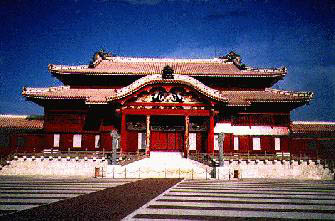 As a result, around the mid to late 1700's a Chinese diplomat named, Kusanku, moved to Okinawa for 6 years. During his stay he began teaching the Chinese system of Ch'uan-Fa. As these influences became introduced into the different local martial arts, they gradually became known as Tode (or Chinese Hand). By the 1800's these styles were again re-named. Shuri and Tomari-Te formed the basis for Okinawan Sho Rin Ryu, while Naha-Te formed Goju Ryu and Uechi Ryu.
As a result, around the mid to late 1700's a Chinese diplomat named, Kusanku, moved to Okinawa for 6 years. During his stay he began teaching the Chinese system of Ch'uan-Fa. As these influences became introduced into the different local martial arts, they gradually became known as Tode (or Chinese Hand). By the 1800's these styles were again re-named. Shuri and Tomari-Te formed the basis for Okinawan Sho Rin Ryu, while Naha-Te formed Goju Ryu and Uechi Ryu.
Although Kusanku is often believed to be a culmination of different Chinese officers, he is often referred to as one person. As is recorded, Tode Sakugawa began studying under Kusanku-sensei. The teachings of Kusanku enabled Sakugawa to combine the essence of both Te and Chinese Boxing principles. These principles form the basis of modern day Shorin Ryu.
Kusanku = Kusanku Kata
Tode Sakugawa = Passai Kata
Sokon "Bushi" Matsumura = Passai Kata & Chinto
Ankoh Yasutsune Itosu = 5 Pinan Kata, Naihanchi Nidan, Naihanchi Sandan, Passai Sho, Passai Dai, Kusanku Sho, Kusanku Dai.
Itosu-sensei was such an incredible instructor, that in 1903, he became the first martial artist to introduce karate-do into the public schools of Okinawa. His students include Gichin Funakoshi-sensei. It was not until the late 1800's that Funakoshi-Sensei termed the essence of Te as "Karate-Do" meaning, "The Way of the Empty Hand." Funakoshi-sensei later founded ShotoKan Karate.
Chosin Chibana = Gojushiho Kata
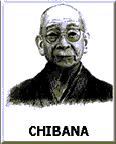 As Sho Rin Ryu began to branch further and further, and other styles evolved from Itosu-sensei's karate. An attempt was made by one of Itosu-sensei's students to preserve his instructors teachings. Itosu-sensei's most loyal and dedicated student, Chosin Chibana-sensei, renamed the style Kobayshi-Ryu (Shorin Ryu - "Young Forest Style") to indicate that he taught Itosu-sensei's original style.
As Sho Rin Ryu began to branch further and further, and other styles evolved from Itosu-sensei's karate. An attempt was made by one of Itosu-sensei's students to preserve his instructors teachings. Itosu-sensei's most loyal and dedicated student, Chosin Chibana-sensei, renamed the style Kobayshi-Ryu (Shorin Ryu - "Young Forest Style") to indicate that he taught Itosu-sensei's original style.
Chibana-sensei's most notable student, Shuguro Nakazato-sensei, who became the head of Shorin Ryu-Shorin Kan branch of Kobayashi. Chibana-sensei's other most notable student, Katsuya Miyahira-sensei, became the head of Shorin Ryu-Shido Kan branch of Kobayashi.
(
Top)
Some Notes On Bassai Kata
By Harry Cook, B.A. - Classical Fighting Arts (Issue #1)
History
Bassai (Passai) kata is often said to have been primarily associated with the great Okinawan karate master Sokon “Bushi” Matsumura (1809-1902). Other Okinawan instructors developed their own versions of Bassai including Matsumora Bassai, Oyadomari Bassas, Itosu Bassai, Kyan Bussai, Chibana Bassai, Ishimine Bassai, and others. The Japanese systems of Shotokan, Wado Ryu and Shito Ryu also developed their own distinctive versions of Bassat, Some styles teach a major (dai) and minor (sho) versions of Bassai, and it is often said that Bassai Sho was developed by the great master, Yasutsune Itosu (1827—1906).
While details of the various versions differ, there is an underlying similarity and some aspects are found in all versions. For example, the opening hand posture which features the clenched right fist covered by the open left hand is standard in all versions. This opening posture is usually explained in one of two ways:
1. The covered fist implies a wish not to use force, i.e. the weapon is covered rather than raised in a threatening way. This is often perceived as a concrete example of Gichin Funakoshi’s precept Karate ni sente nashi (There is no first attack in karate).
2. This posture is a fragment of the original Chinese form that may have been the source of the kata. The clenched fist stands for the sun while the open hand represents the moon. In Chinese the character formed in this way is pronounced
Ming (Bright)1 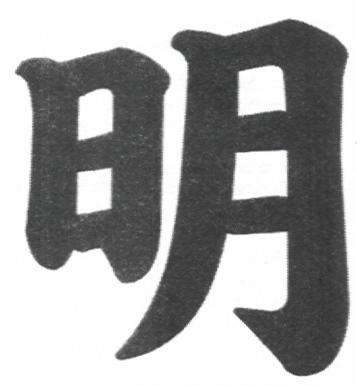 and thus recalls the Ming dynasty (1368-1644), the last native Chinese dynasty which was replaced by the invading Manchu’s who established the rule of the Ching emperors. It is said that many patriotic societies wanted to overthrow the Ching and return the Ming to power, and so when they trained in martial arts they used the covered hand posture to remind them of the aim of their training. Certainly the Boxers who rose in China at the end of the nineteenth century made use of the slogan “Fan Ch’ing Fu Ming” (Overthrow the Ching, restore the Ming), and the covered hand posture is still seen in Chinese systems, both as a greeting or salutation and in the forms.
and thus recalls the Ming dynasty (1368-1644), the last native Chinese dynasty which was replaced by the invading Manchu’s who established the rule of the Ching emperors. It is said that many patriotic societies wanted to overthrow the Ching and return the Ming to power, and so when they trained in martial arts they used the covered hand posture to remind them of the aim of their training. Certainly the Boxers who rose in China at the end of the nineteenth century made use of the slogan “Fan Ch’ing Fu Ming” (Overthrow the Ching, restore the Ming), and the covered hand posture is still seen in Chinese systems, both as a greeting or salutation and in the forms.
The Name
It is interesting to note that Gichin Funakoshi wrote the name Bassai in his first two books (1922, 1925) in kana (syllables) rather than kanji (Chinese characters). Other writers also used kana rather than kanji, including Choki Motobu (Okinawa Kempo Karate Jutsu Kumite Hen, 1926), Nisaburo Miki (Kempo Gaisetsu 1930), and Mizuho Takeda (Karate Kempo, 1933). 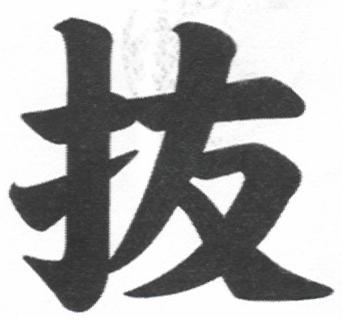 This may suggest that either the name had never been written down, but was passed on through oral tradition, or that the writers used kana to enable their Japanese readers to understand the Okinawan pronunciation of the kata (Pass as) as the older more obscure Chinese characters may have been relatively unknown.
Funakoshi first seems to have made use 0f the characters for Bassai (at least in his books) in his magnum opus Karate Do Kyohan (1935). The first character PA (Chinese) BATSU (Japanese)
means “to extract,” “to root up” and is often used in Chinese compounds meaning “to capture a city,” “to break up a camp”, “to root up a mountain” (i.e. to show extraordinary strength). The second character SAI (Chinese) FUSAGU or SAI (Japanese)3
This may suggest that either the name had never been written down, but was passed on through oral tradition, or that the writers used kana to enable their Japanese readers to understand the Okinawan pronunciation of the kata (Pass as) as the older more obscure Chinese characters may have been relatively unknown.
Funakoshi first seems to have made use 0f the characters for Bassai (at least in his books) in his magnum opus Karate Do Kyohan (1935). The first character PA (Chinese) BATSU (Japanese)
means “to extract,” “to root up” and is often used in Chinese compounds meaning “to capture a city,” “to break up a camp”, “to root up a mountain” (i.e. to show extraordinary strength). The second character SAI (Chinese) FUSAGU or SAI (Japanese)3 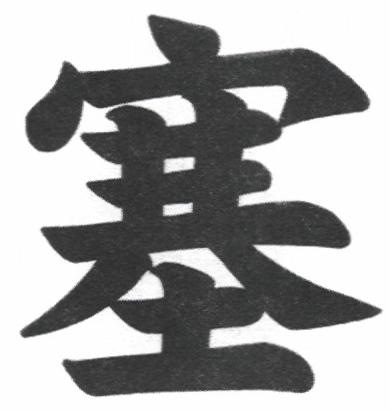 , means “to block up, to stop up, obstruct”. In Chinese the SM character can be used to transliterate foreign sounds.
, means “to block up, to stop up, obstruct”. In Chinese the SM character can be used to transliterate foreign sounds.
Richard Kim, on page 44 of his The Weaponless Warriors (1974), says that Bassai means “to breach or go through fortifications:’ This translation or something very similar is usually said to be the meaning of Bassai, but if we look at the characters used by Gichin Funakoshi in 1935 it is difficult to see how this explanation is arrived at.
The first character is not a problem as PA/ BATSU means to use strength in some way and as one does not “extract a city” or “extract a castle” the idea of capture/attack/storm etc. is obvious from the context. However the second character dearly does not mean a fortress or castle of any kind.
However other writers did make use of two characters that do mean “to storm a fortress.’ The first character is the same as that used by Gichin Funakoshi, but the second is the Chinese character CHAI 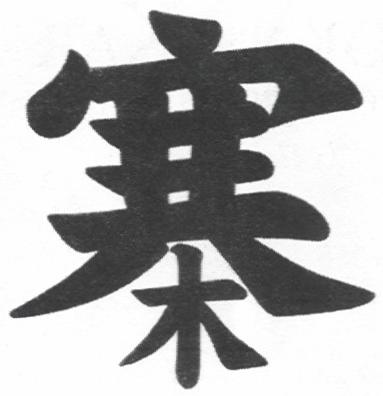 which means “a stockade, a military outpost; a walled village.” I believe that the character FUSAGU/SAI (to stop, obstruct) should actually
be the character which is read as CHAI (fortress) in Chinese. The two characters are very similar and it is easy to confuse them; either Gichin Funakoshi made a mistake or this was an error introduced by a typesetter when the book was printed. Just such an error can be found in Karate Nyumon (1943) where the character KAN (winter)5 is written instead 0f the character fix SAT (the characters look very similar) in the kata list on page 58 where Bakan is written instead of Bassai.
which means “a stockade, a military outpost; a walled village.” I believe that the character FUSAGU/SAI (to stop, obstruct) should actually
be the character which is read as CHAI (fortress) in Chinese. The two characters are very similar and it is easy to confuse them; either Gichin Funakoshi made a mistake or this was an error introduced by a typesetter when the book was printed. Just such an error can be found in Karate Nyumon (1943) where the character KAN (winter)5 is written instead 0f the character fix SAT (the characters look very similar) in the kata list on page 58 where Bakan is written instead of Bassai.
This is the compound which appears in Genwa Nakasone’s book Karate Do Taikan (1938). In this work, the Shorin Ryu master Choshin Chibana performs Bassai. He uses the character (6) to write Bassai. The second character is cognate with the Chinese CHAI meaning a fortress or stockade. (See Mathews Chinese English Dictionary, Harvard University Press, 1972 p13 character 116). 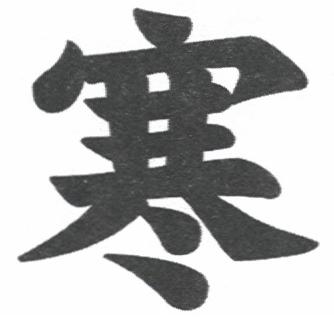
This combination of characters is also used by Yasuhiro Konishi and Kanei Mabuni when they demonstrate Bassai kata in their works. It should be noted than when senior Shotokan master Taiji Kase wrote his l8 Kata Superieurs Karate-Do Shotokan Ryu (Sedirep, 1982) he also used these characters.
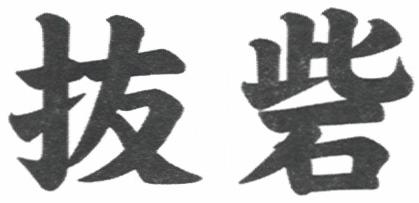
The characters used by Gichin Funakoshi in 1935 have subsequently been used by many Shotokan writers including Hirokazu Kanazawa, Tesuhiko Asai, and Shojiro Suglyama. This version was also used by Shorin Ryu master Shoshin Nagamine m the English language version of his Essence of Okinawan Karate-Do (1976). However in the earlier Japanese edition of his book he writes Bassai in kana rather than kanji.
Kata : Naihanchin Shodan
An illustration of the naihanchin shodan and application (bunkai)
Coming Soon. Watch Out!!!
(
Top)
Copyright 2005.
|